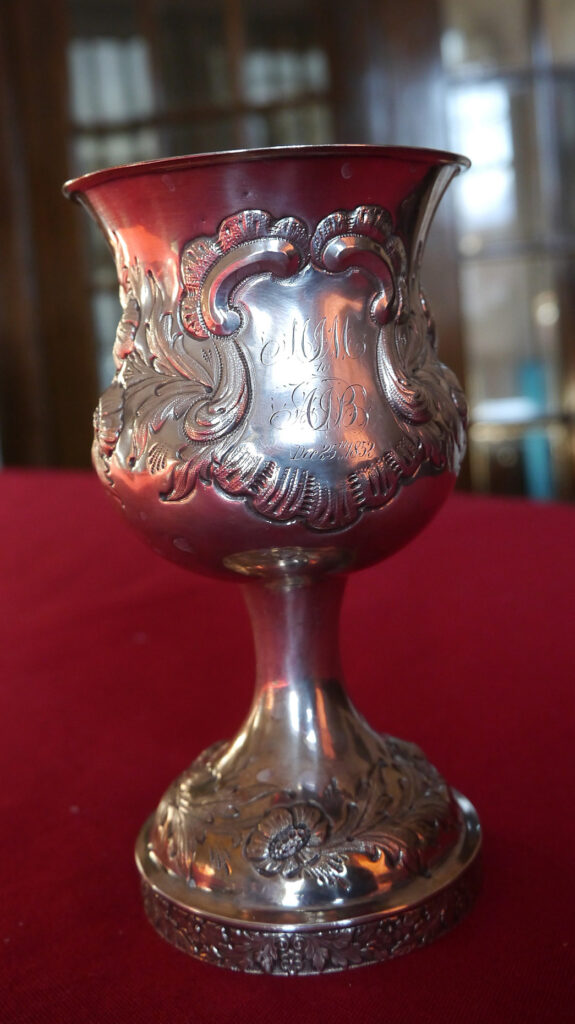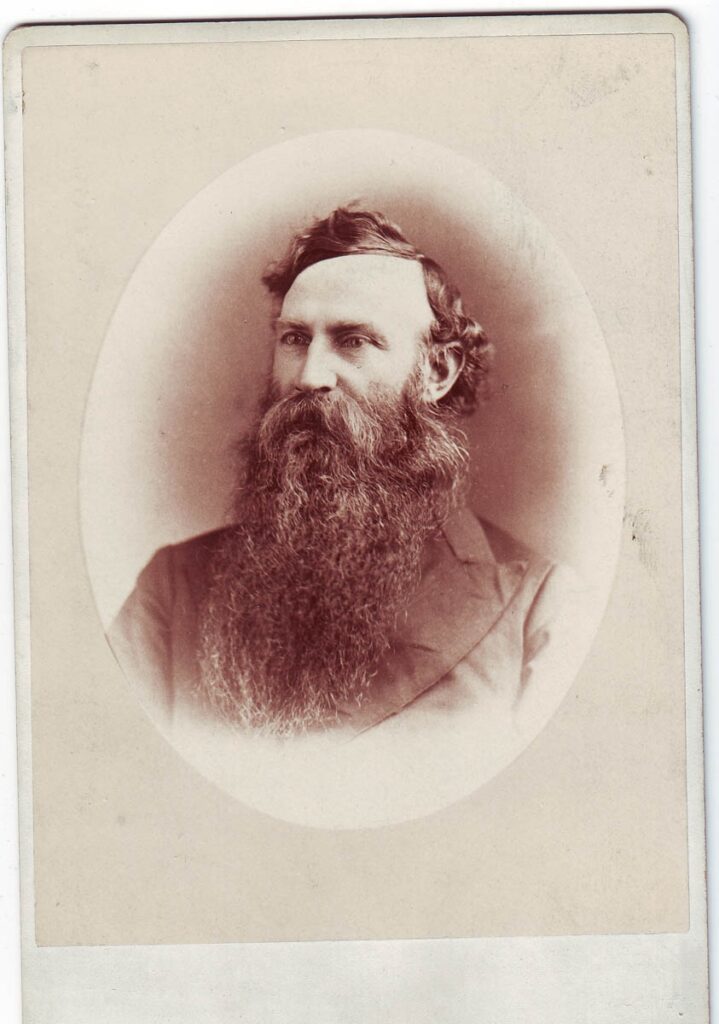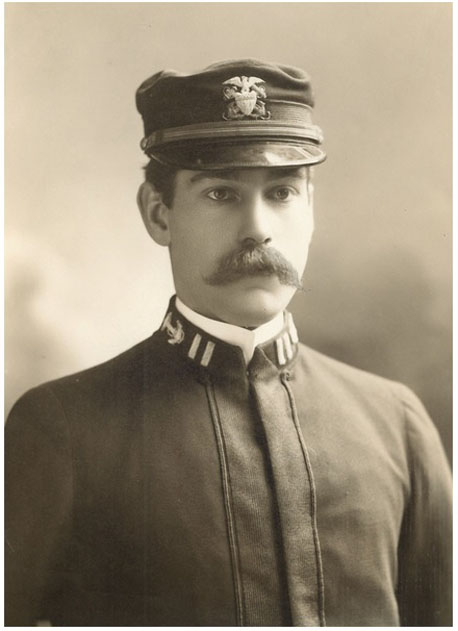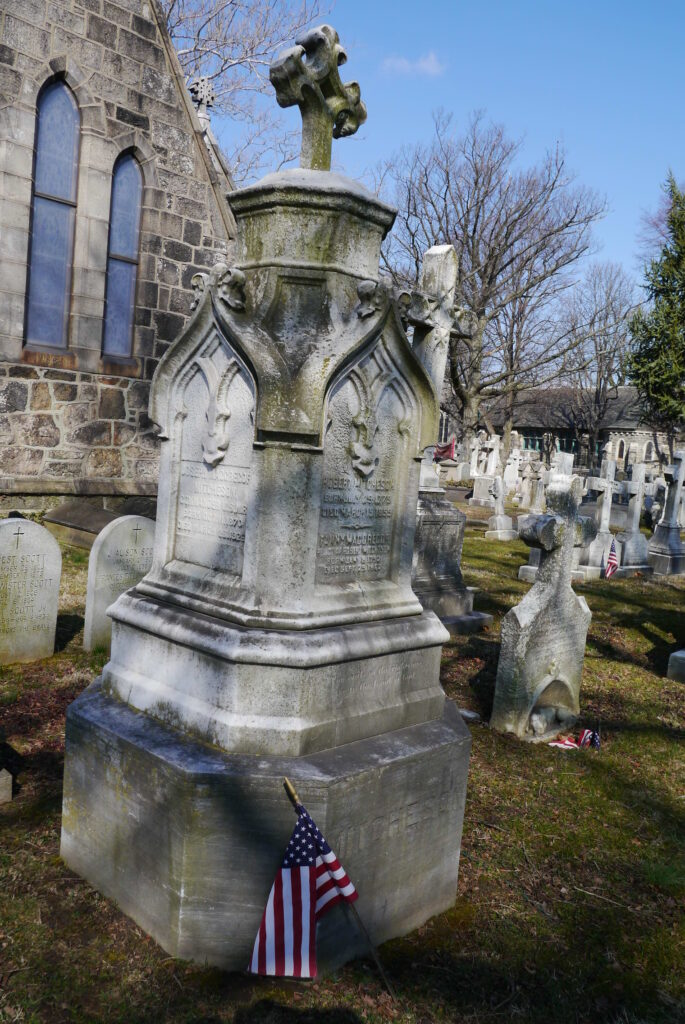Every year at Christmas dinner, my husband toasts our guests with a small antique goblet. His gesture has become a new family tradition. Before he came across this goblet in our kitchen cupboard, it had sat unused at my parents’ Montreal home for decades. I had no idea what it was or how it came into the family.

A pattern of flowers and leaves encircles the metal goblet and the initials and date “MJM to AJB Dec. 25 1852” are inscribed. I realized it must have originally been a Christmas gift, but from whom and to whom?
Research revealed that MJM was MacGregor Joseph Mitcheson (1828-1886), and AJB was his 10-month-old niece Amelia Josephine Bagg (1852-1943). This must have been a gift MacGregor sent Amelia for her first Christmas. A fancy goblet seems like a rather strange present for a young man to give a baby, so perhaps it was a tradition, or his parents’ idea.
Amelia was the second surviving daughter of Montreal notary and landowner Stanley Clark Bagg (1820-1873) and his wife, Catharine Mitcheson Bagg (1822-1914). Catharine’s family lived in Philadelphia and McGregor J. Mitcheson was the youngest of her three brothers. In 1852, he was age 24 and a law graduate of the University of Pennsylvania who had recently been admitted to the bar of Philadelphia.
Despite the distance between the two cities, Catherine Mitcheson Bagg and her brother seem to have been quite close, so perhaps McGregor and Amelia eventually got to know each other. Amelia was 21 when her father died in 1873, and McGregor was one of the executors of Stanley Clark Bagg’s will, so he may have travelled to Montreal to advise his sister on family matters.

MacGregor J. Mitcheson
MacGregor must have been an unforgettable house guest. His blue-grey eyes and long brown beard give him a rather wild appearance.1 He also had a forceful personality. In a book on Philadelphia lawyers, written some 30 years after MacGregor’s death, a former colleague recalled, “There never was an advocate who fought harder, or who merged his excessively egotistic personality more completely in that of his client. In another important sense was he entitled to great praise. He had a ready and instinctive perception of every essential fact in a case, in all its bearings, and a fine gift of memory for retaining them …..”2
Professionally, he specialized in real estate law. In the community, he was involved in the charity work of the United States Sanitary Commission at the time of the U.S. Civil War, he was president of the Northern Home for Friendless Children and Soldiers’ Orphans for many years, and he was an active member of the Protestant Episcopal Diocese of Pennsylvania.3
MacGregor married at age 41 to Ellen Brander Alexander Bond, a widow, and together they had three children. One died as a child, one did not marry and one married but had no children.
As for MacGregor’s niece Amelia, she also married relatively late at life. She married her first husband, real estate agent Joseph Mulholland, in 1890 and he died seven years later. Her second husband, Rev. John George Norton, Anglican Archdeacon and Rector of Montreal, was a widower.
Amelia had no children of her own, but she was quite close to her niece Gwendolyn Bagg (1887-1963) and Gwen’s husband, Fred Murray Smith — my future grandparents. They probably inherited the goblet when Aunt Amelia died, age 86, in 1938. For them, it would have been a precious reminder of a favourite aunt and a link to a great-uncle who died the year before Gwen was born.
Photo of MacGregor J. Mitcheson by Wm. Notman & Son, Montreal; Bagg family collection.
This article is also posted on https://genealogyensemble.com
Notes and Sources
I have described the goblet as metal because I do not know whether it is silver or pewter. There is no hallmark on it.
MacGregor J. Mitcheson was born Joseph MacGregor Mitcheson on Nov. 26, 1828 and died at age 57 on June 29, 1886. These dates are according to the cemetery records of St. James the Less Episcopal Church, Philadelphia. The records of St. John’s Protestant Episcopal Church, Northern Liberties, Philadelphia, held at the Historical Society of Pennsylvania in Philadelphia, say he was baptized on April 17, 1829.
MacGregor eventually lived on Locust Street in downtown Philadelphia in a house designed by architect Frank Furness. See http://www.waymarking.com/waymarks/WMG1GH_MacGregor_Mitcheson_House_Philadelphia_Pennsylvania
- “U.S. Passport Applications, 1795-1925,” Ancestry.ca[database on-line] entry for MacGregor J. Mitcheson, 1865; National Archives and Records Administration, Washington DC. ARC Identifier 56612/MLR Number A1 508, NARA Series M1372; Roll # 127.
- Robert D. Coxe, Legal Philadelphia: Comments and Memories, Philadelphia: W.J. Campbell, 1908, p. 140, accessed March 3, 2013.
- An Historical Catalogue of the St. Andrews Society of Philadelphia with Biographical Sketches of Deceased Members, 1749-1907, printed for the Society, 1907; Google Books, accessed July 19, 2013.


